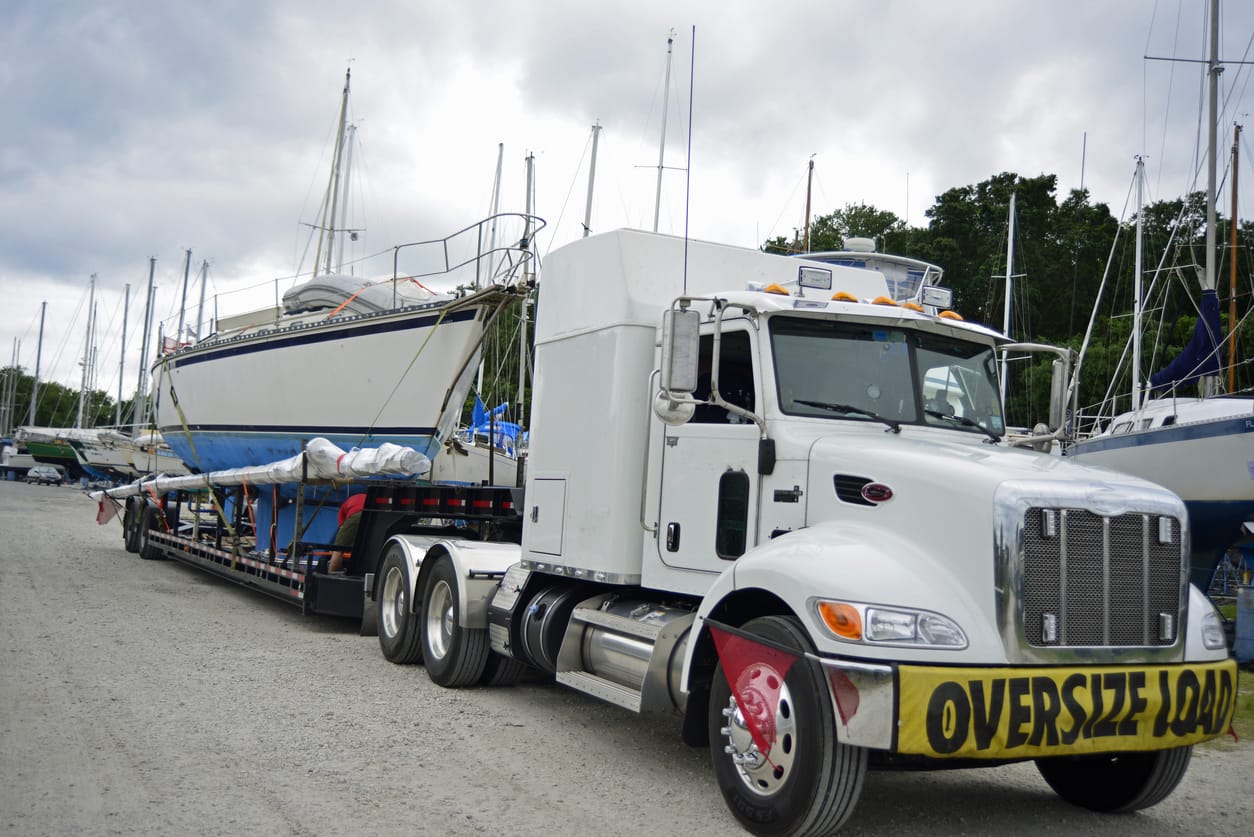The foundation of supply chain management and logistics is freight rates, which have a significant impact on how companies operate throughout the world. This section explores the fundamentals of freight rates with a focus on how they affect supply chain efficiency and company strategy. Businesses may increase customer happiness and profitability by successfully understanding and managing freight prices.
Importance of Competitive Rates: Having competitive freight rates is crucial to a business’s ability to be financially stable. Businesses may cut their overall shipping costs by negotiating cheaper freight rates, which they can then either absorb into their profit margins or pass on to customers as discounts. By lowering product costs or improving service offerings, this pricing strategy flexibility ensures consumer pleasure while helping businesses remain competitive in their particular industries.
Role of Freight Rates in Logistics: Because freight rates determine which shipping techniques and routes are most cost-effective, they have a considerable impact on logistics. The effectiveness of the supply chain is impacted by decisions made on the modes and carriers of transportation. These rates are one factor in this process. In addition to reducing costs, a well-managed freight strategy streamlines operational processes and guarantees prompt and economical delivery of goods.

In order to satisfy your unique logistics needs, selecting the best carrier and delivery method involves more than just looking for the best deal; it also involves striking a balance between cost effectiveness and service quality. This section examines the many shipping choices that are available and offers advice on how to choose the best freight service. Businesses hoping to improve customer happiness and optimize their supply chain operations must comprehend these options.
Types of Shipping Modes: Every delivery method has unique benefits and drawbacks that might affect price, time, and environmental effect. Sea transport is slower than other types of transportation, yet it is frequently the most economical option for international shipment. The quickest delivery is possible with air transport, although it is more expensive and has a smaller capacity. Road transport offers flexibility and accessibility but can be impacted by traffic and road conditions. In contrast, rail transport is more cost-effective for large shipments and has a less environmental impact.
Choosing the Right Freight Carrier: There is more to evaluating freight companies than just comparing prices. It’s critical to take into account the carrier’s experience, dependability, and suitability for your shipment requirements. For example, carriers that specialize in hazardous items must follow stringent safety rules, while those that specialize in perishable commodities may have state-of-the-art cold storage facilities. Furthermore, a carrier’s dependability in terms of delivery rates on schedule and their capacity to adapt to changes

Securing the best freight prices without sacrificing service quality requires careful strategic planning. Reducing freight costs may be achieved by using well-informed tactics and an understanding of market dynamics. This section will look at doable strategies that companies may use to reduce shipping costs and make their logistics operations more efficient and economical.
Flexibility in Shipping Dates: Keeping your shipment schedules flexible is one of the easiest yet most efficient ways to save freight expenses. Reduced prices are frequently available to businesses who can modify their delivery dates to coincide with the availability of carriers. Since carriers want to run at maximum capacity, especially during off-peak hours, they could give discounts when they have unplanned room to fill.
Understanding NMFTA Guidelines: Effective shipping cost management requires familiarity with National Motor Freight Traffic Association (NMFTA) principles. By following these principles, companies may avoid costly mistakes and delays by being more aware of the classifications, packing requirements, and documentation needed for various types of freight. Adherence to NMFTA guidelines guarantees accurate cargo pricing as well as safe and effective handling, preventing extra fees associated with non-compliance.

The skill of freight carrier negotiation may have a big impact on how economical and productive your shipping operations are. The subtleties of negotiating tactics that might assist you in getting better terms and conditions from your carriers are covered in this section. Any company trying to reduce expenses associated with logistics and streamline its shipping procedures must comprehend these strategies.
Leveraging Shipping Volume: Both the volume and frequency of your shipments may be very useful negotiating chips with carriers. You may bargain for more favorable terms or reduced charges by showcasing a consistent and dependable volume of business. Because a high-volume client means steady revenue for the carriers, they are frequently prepared to provide discounts or other special terms in exchange for the customer’s business.
Building Long-term Relationships: Contracting with carriers over an extended period of time has several advantages, such as priority service and pricing consistency. Carriers are more inclined to negotiate for conditions that benefit both parties when they perceive a commitment to a partnership that lasts. Additionally, these connections may enable more individualized care and quicker reaction times, both of which are beneficial in times of high demand or unforeseen difficulties in the supply chain.
All these methods contribute to lower expenses while simultaneously strengthening a more robust and adaptable logistics network. Companies can make sure they’re not just receiving competitive prices but also building partnerships that bring value above and beyond cost reductions by becoming skilled at these negotiation strategies.

Sustaining cost effectiveness in freight transportation is a constant problem that calls for proactive management and constant adjustment to market conditions. Getting competitive freight prices is one thing, but maintaining these cost savings over time is what will truly matter as success. This section will examine tactics that companies may use to track and modify their freight expenses in order to maintain long-term competitiveness.
Monitoring Market Changes: Staying up to date with developments in the freight sector is crucial to preserving cost effectiveness. Market developments, such as fluctuations in supply and demand, fuel prices, and regulatory changes, can have a big influence on freight rates. Businesses may better predict and respond to future pricing swings by routinely examining these trends. This allows them to make timely adjustments to their logistics strategy and maintain competitive rates.
Periodic Review of Contract Rates: Regular evaluations of freight carrier contract rates are essential for long-term cost control. By using this procedure, companies may review their existing contracts in light of evolving market dynamics and bargain for changes if more favorable terms or rates become available. Businesses may maintain their competitive edge by making sure their freight contracts reflect the most recent market pricing and circumstances by being attentive and willing to renegotiate.
By putting these strategies into practice, businesses not only safeguard their initial cost reductions but also develop a flexible logistics management strategy that can keep profits high while responding to changes in the market.
We’ve covered a wide range of important tactics in this extensive guide to assist you in successfully navigating and maximizing freight prices. You may save a lot of money on logistics by using your in-depth knowledge of the freight industry, comparing quotations from several companies, and keeping your shipment schedules flexible. We also talked about the significance of strategic carrier negotiations, highlighting the power that comes from understanding your own shipment volume and frequency to obtain more favorable terms. Furthermore, maintaining a current understanding of industry trends and routinely reviewing your contract prices are crucial procedures to guarantee that your freight expenses continue to be competitive over time. By using these focused strategies, companies may increase overall operational efficiency and customer happiness in addition to saving money.

Discover Why Ship A Car, Inc. Is Your Best Choice for Freight and Vehicle Shipping
Due to its outstanding service quality and steadfast dependability, Ship A Car, Inc. has become a leading player in the freight and vehicle transport sector. In addition to having an A+ rating from the Better Business Bureau (BBB), SAC routinely receives five-star ratings from pleased clients throughout the country. The honors demonstrate Ship A Car, Inc.’s dedication to client satisfaction and its aptitude for deftly and professionally managing logistical difficulties. Ship A Car, Inc. provides customized solutions to satisfy a range of shipping needs, whether you need to handle heavy haul freight transport operations or move a car across the country. Their knowledgeable staff of transport advisers is available around-the-clock to offer professional advice and assistance, making sure your shipment process runs smoothly and without any worry.
Q1: What are the best strategies to secure competitive freight rates?
A1: You may improve your ability to negotiate by comparing different quotations, being flexible with shipment dates, and having a solid understanding of your shipping requirements and volume.
Q2: How does the choice of shipping mode affect freight rates?
A2: Different means of transportation (sea, air, rail, and road) have different prices and transit durations, which in turn impact the overall freight rate dependent on the urgency of the shipment and the kind of cargo being transported.
Q3: What should be considered when negotiating with freight carriers?
A3: For successful discussions, it is important to have a solid understanding of market trends, your own shipment volume and frequency, and the perspective of the carrier.




